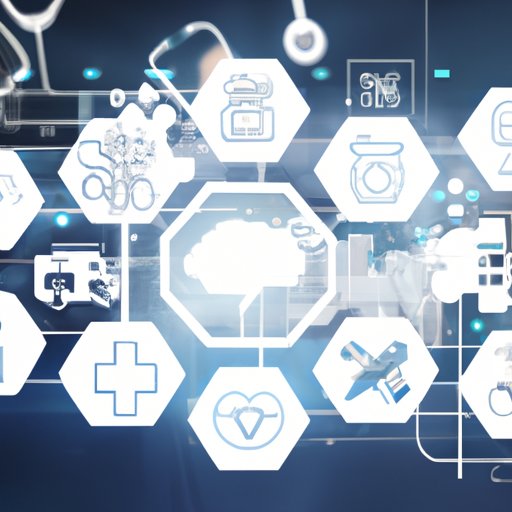Introduction
Health information technology (HIT) is a rapidly growing field in healthcare. It refers to the use of digital tools to collect, store, organize, manage, and secure health data and medical information. HIT solutions are transforming the way healthcare is delivered and changing the way patients and providers interact. In this article, we will explore the impact of HIT on patient care, how it is revolutionizing healthcare, and what the future of health IT holds.
Impact of Health Information Technology on Patient Care
HIT has had a significant impact on patient care. Its use has enabled improved quality of care, enhanced communication between patients and providers, and improved safety and efficiency. Let’s take a closer look at each of these areas.
Improved Quality of Care
HIT has enabled improved quality of care by providing clinicians with easy access to comprehensive patient data. With the use of electronic health records (EHRs), providers can access a patient’s complete medical history quickly and accurately, which helps them make more informed decisions. The use of HIT also allows for improved tracking and management of treatments, medications, and clinical outcomes, which helps ensure that patients receive the best possible care.
Enhanced Communication Between Patients and Providers
The use of HIT has also enabled enhanced communication between patients and providers. Through the use of telemedicine, providers can now offer remote consultations and monitor patients from a distance. This not only improves access to care, but it also helps reduce wait times and travel costs. Additionally, the use of wearable technologies, such as fitness trackers and smartwatches, allows patients to easily share health data with their providers, further enhancing the communication between them.
Improved Safety and Efficiency
HIT solutions have also improved safety and efficiency in healthcare. By automating administrative processes, such as billing and scheduling, HIT has helped reduce errors and streamline operations. Additionally, the use of advanced analytics has enabled providers to identify potential problems before they happen, allowing them to proactively address issues and prevent adverse events.
Role of Health Information Technology in Improving Outcomes
HIT has also played an important role in improving healthcare outcomes. By providing clinicians with improved access to accurate medical records, HIT has enabled more accurate diagnoses and treatments. Additionally, the use of HIT has improved coordination of care across multiple providers and facilities, resulting in better health outcomes for patients.

Overview of Health Information Technology Solutions
There are several different types of HIT solutions available today. Some of the most commonly used solutions include:
Electronic Health Records (EHRs)
EHRs are digital versions of paper-based medical records. They allow clinicians to access a patient’s complete medical history quickly and accurately, enabling them to make more informed decisions. Additionally, EHRs enable the sharing of data between providers and facilities, improving coordination of care.
Telemedicine
Telemedicine utilizes digital technologies to provide remote consultations and monitoring of patients. It helps improve access to care and reduce wait times and travel costs. Additionally, it enables providers to monitor patients from a distance and intervene if needed.
Wearable Technologies
Wearable technologies, such as fitness trackers and smartwatches, allow patients to easily share health data with their providers. This helps providers monitor their patients’ health more closely and intervene if needed.

How Health Information Technology is Revolutionizing Healthcare
HIT is revolutionizing healthcare in many ways. Let’s take a look at some of the ways it is impacting the industry.
Streamlining Administrative Processes
HIT solutions are streamlining administrative processes, such as billing and scheduling. By automating these processes, HIT has helped reduce errors and streamline operations, resulting in increased efficiency and reduced costs.
Enhancing Population Health Management
The use of HIT has also enabled enhanced population health management. By collecting and analyzing large amounts of data, HIT solutions can help identify trends and patterns that can be used to improve public health. Additionally, they can help identify at-risk populations and target interventions accordingly.
Increasing Patient Engagement
HIT solutions are also increasing patient engagement. By providing patients with easy access to their own health data, HIT solutions enable patients to become more active participants in their own care. Additionally, they enable patients to communicate directly with their providers, further enhancing the patient-provider relationship.

Understanding the Future of Health Information Technology
As HIT continues to evolve, new technologies are being developed that promise to revolutionize the healthcare industry. Some of the emerging technologies that are driving the future of HIT include:
Artificial Intelligence and Machine Learning
Artificial intelligence (AI) and machine learning are being used to analyze large amounts of data to identify trends and patterns. This technology can be used to improve diagnosis accuracy, predict outcomes, and recommend treatments. Additionally, it can be used to automate administrative tasks and streamline operations.
Automation and Robotics
Robotics and automation are being used to improve operational efficiency and reduce errors. Automated systems are being used to process patient data, schedule appointments, and manage inventory. Additionally, robots are being used to assist in surgery, enabling surgeons to perform complex procedures with greater precision.
Blockchain Technology
Blockchain technology is being used to securely store and transfer health data. By creating an immutable record of transactions, it ensures that data is secure and cannot be tampered with. Additionally, it enables the secure sharing of data between providers and patients, improving collaboration and coordination of care.
Conclusion
HIT has had a profound impact on patient care and how healthcare is delivered. By providing clinicians with improved access to data, enabling enhanced communication between patients and providers, and streamlining administrative processes, HIT solutions are revolutionizing healthcare. As new technologies continue to emerge, HIT will continue to evolve and revolutionize the industry even further.


